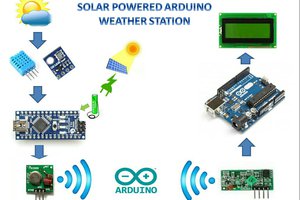ATmega328au + SIM800 + FTDI = Total IoT development awesomeness! The platform has the popular ATMEGA328AU microcontroller with the Arduino bootloader burnt-in. This allows anyone to use the Arduino IDE to program the device. Most of the ATMEGA328AU pins are broken out on a header in case the user needs to use them for sensors, etc. All Arduino sketches are compatible.
The board can also be used as a FTDI cable by changing a couple of jumpers, and soldering the optional FTDI header.
Features:
- SimCom SIM800H cellular module.
- ATMEGA328AU microcontroller with Arduino bootloader
- Genuine FT232RL FTDI chip.
- Optional FTDI header to use the board as an FTDI cable only.
- On-board LiPo battery charger (MCP7383) to keep the battery supporting the SIM800H charged.
- On-board 5V LDO regulator (MIC5225) which allows powering the board with an external battery pack (VBAT pin). Input voltage up to 16V.
- All unused SIM800H pins broken out on the board in case user wants to add a microphone/speakers or FM radio. Please see the SIM800 hardware guide for additional feature details.
- Small prototyping area to attach sensors, etc.
- uFL antenna connector.
- Micro USB connector.
CellStick pin information
JST 2-pin - Battery input connector. It works with a Lipoly battery but since the charge rate is 500mA we suggest a 500mAH or 1200 mAH battery. A battery must be connected to this connector in order to power the SIM800H. The purpose of this additional power source is to supply enough current to the SIM800H when functioning. The onboard charging circuitry will keep the LiPo battery connected to the JST charged at all times via the USB port or a battery connected to VBAT
VBAT - External power supply when the Cellstick is not being powered through the micro USB connector. The VBAT can be anything up to 16V.
PK - This pin is tied to the tactile switch and controls the power up of the SIM800H module. Tie is to ground permanently to power on the module when the board is powered.
In order to power up the SIM800H module after connecting a battery, hold down the tactile switch for a few seconds, and the blue netstat light should start flashing to indicate the system power up.
The CellStick comes preloaded with a test program. Just connect a USB cable to the device, launch the Arduino IDE, and launch a serial monitor at 115200 baud to see the CellStick diagnostic menu print out.
CellStick SIM800H test point information
All the pins of the SIM800H module were purposely broken out on the PCB to enable the user to add other functionality if needed. This can include adding voice, bluetooth or FM radio functionality. These additional features have not been tested but should work with the relevant circuitry. Please refer to SIMcom's documentation for more details.
TP1 - Output voltage 2.8V
TP2 - PWM
TP3 - ADC
TP6 - VBAT
TP7- MIC2N
TP8 -MIC2P
TP9 - MIC1P
TP10 - SPK2N
TP11 - SPL2P
TP12 - SPK1N
TP13 - SPK1P
TP14 - BT_ANT
TP15 - FM_ANT_P

 Dixbit
Dixbit

 Chris K Cockrum
Chris K Cockrum
 Open Green Energy
Open Green Energy